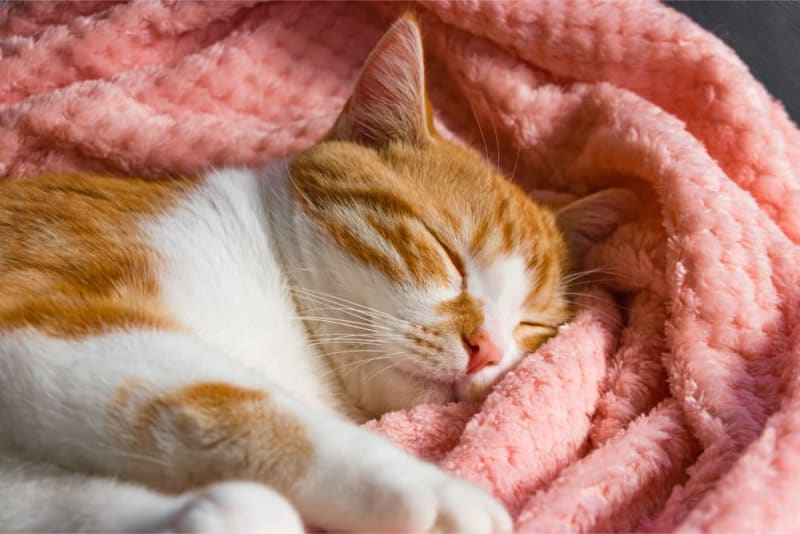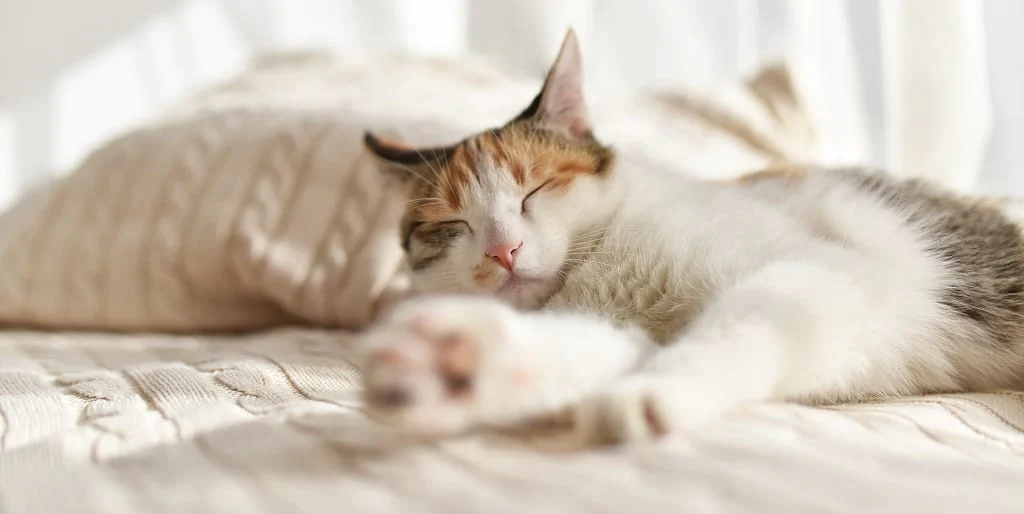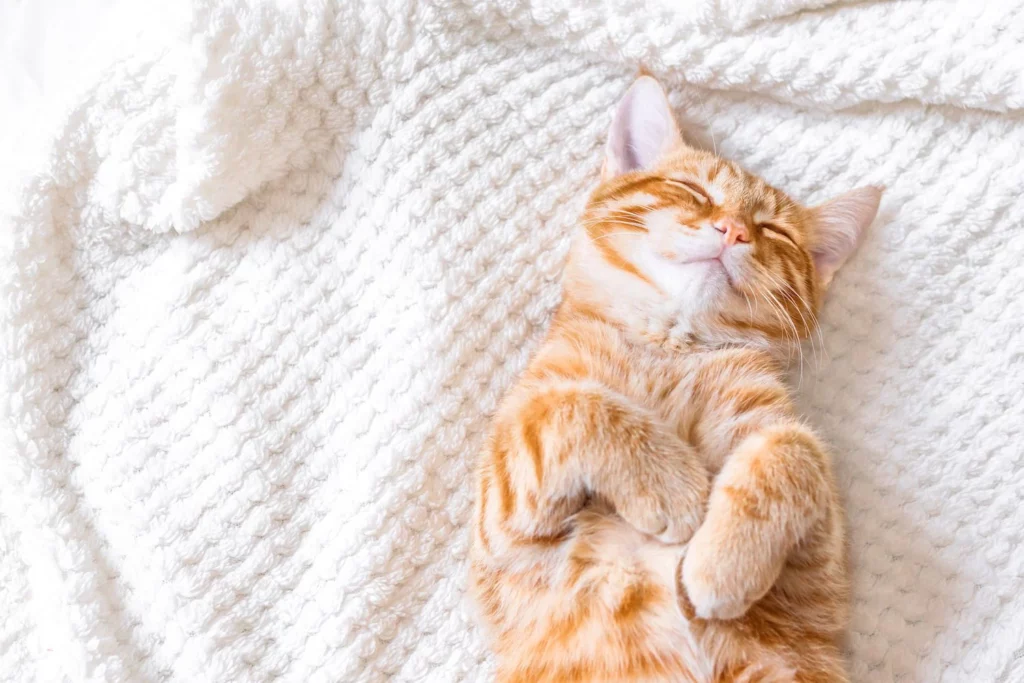Training Your Cat to Sleep Through the Night
Training your cat to sleep through the night can be a challenge, but it is possible with the right techniques.Cats are known for their independent nature and their ability to sleep for long hours, but what happens when your feline friend becomes a nocturnal troublemaker, disrupting your sleep? It can be quite frustrating dealing with a cat that keeps you awake at night, but with the right approach, you can train your cat to sleep through the night peacefully.
In this article, we will explore various strategies and techniques to help you achieve a harmonious sleep routine with your furry companion.
Understanding Your Cat’s Sleep Patterns
Before delving into the training process, it’s essential to understand the natural sleep patterns of cats. Cats are crepuscular animals, which means they are most active during dawn and dusk. They have shorter sleep cycles compared to humans, and on average, cats sleep for about 12 to 16 hours a day. However, various factors can disrupt their sleep, leading to nighttime disturbances.

Creating a Conducive Sleep Environment
To encourage your cat to sleep through the night, you need to provide a comfortable sleeping spot. Choose a cozy, well-padded bed or blanket where your cat can curl up undisturbed. Additionally, create a quiet and peaceful space away from any noisy activities or household commotion. Controlling factors like temperature and light can also contribute to better sleep quality for your feline companion.
Establishing a Bedtime Routine
Consistency is key when it comes to training your cat to sleep through the night. Establishing a bedtime routine signals to your cat that it’s time for sleep. Create a pre-bedtime ritual that includes activities such as gentle brushing, interactive play, or even clicker training. This routine will help your cat wind down and prepare for a restful night’s sleep.
Promoting Physical and Mental Tiredness
One of the reasons cats may exhibit nighttime restlessness is due to insufficient physical or mental stimulation during the day. Engage your cat in regular play sessions using interactive toys to encourage physical exercise. Additionally, provide mental stimulation through puzzle toys or hiding treats around the house. A tired cat is more likely to sleep soundly through the night.
Feeding Schedule and Bedtime Snacks
Mealtime can have a significant impact on your cat’s sleep quality. Establish a regular feeding schedule, preferably with the last meal of the day a few hours before bedtime. Avoid feeding your cat immediately before sleep, as a full stomach may lead to discomfort or restlessness. Instead, offer a light bedtime snack that promotes relaxation, such as a small portion of canned cat food or a treat designed to aid sleep.
Addressing Separation Anxiety and Attention-Seeking Behavior
Some cats may exhibit nighttime disturbances as a result of separation anxiety or seeking attention from their owners. To reduce separation anxiety, gradually increase the amount of time your cat spends alone during the day, providing enrichment activities and toys to keep them engaged. Additionally, ensure your cat receives ample attention and affection during the day to minimize attention-seeking behavior at night.
Dealing with Nighttime Disturbances
Minimizing noise disruptions during the night is crucial for creating an undisturbed sleep environment for your cat. Consider using earplugs or white noise machines to mask any loud or sudden noises that may startle your feline friend. If your cat is easily disturbed by outside sounds, try closing windows or using heavy curtains to block out the noise.

Importance of Quality Bedding and Appropriate Sleep Surfaces
Choosing the right bed for your cat is essential for their comfort and sleep quality. Opt for beds that provide adequate support and cushioning. Experiment with different bedding materials to find what your cat prefers, such as plush, fleece, or memory foam. Providing your cat with options and observing their sleep preferences will help create the perfect sleeping space.
Avoiding Common Sleep Disruptions Caused by Health Issues
Sometimes, sleep disturbances in cats can be the result of underlying health problems. If your cat continues to struggle with sleep despite implementing various strategies, it’s crucial to consult with a veterinarian. The vet can help identify any health issues that may be affecting your cat’s sleep and provide appropriate treatment or guidance.
The Role of Positive Reinforcement in Training
Positive reinforcement is a powerful tool in training cats. Whenever your cat exhibits desirable sleep behaviors, such as settling down in their designated sleeping spot or remaining calm during the night, reward them with treats, praise, or gentle strokes. This positive association will encourage your cat to repeat those behaviors in the future.
Patience and Consistency in the Training Process
Training a cat to sleep through the night takes time and patience. It’s essential to have realistic expectations and understand that behavior change may not happen overnight. Stick to the established bedtime routine, consistently reinforce positive behaviors, and remain calm and patient throughout the training process.
Troubleshooting Common Challenges in Sleep Training
While some cats may adapt quickly to sleep training, others may exhibit resistance or experience regression during the process. If you encounter challenges, modify your approach as needed. For example, adjust the pre-bedtime activities, try different types of toys, or consult with an animal behaviorist for professional guidance.
Monitoring and Evaluating Your Cat’s Sleep Progress
As you continue the training process, monitor your cat’s sleep progress closely. Look for signs of improved sleep quality, such as longer periods of uninterrupted sleep or a calm demeanor during the night. Based on your cat’s individual needs, adjust the bedtime routine, environmental factors, or other aspects of the training to ensure continuous improvement.
Conclusion
Training your cat to sleep through the night requires patience, consistency, and an understanding of your cat’s unique needs. By creating a conducive sleep environment, establishing a bedtime routine, providing ample physical and mental stimulation, addressing any underlying health issues, and employing positive reinforcement techniques, you can help your cat develop healthy sleep habits. With time, dedication, and love, both you and your feline friend can enjoy peaceful nights and well-rested days.

FAQs: Training Your Cat to Sleep Through the Night
Why does my cat sleep during the day and cause disturbances at night?
Cats are crepuscular animals, meaning they are most active during dawn and dusk. Their natural instinct drives them to conserve energy during the day and become more active at night, which can lead to disturbances during sleep.
How long should I play with my cat before bedtime?
Engaging your cat in interactive play sessions for about 10-15 minutes before bedtime can help tire them out mentally and physically, promoting a better night’s sleep.
Is it normal for cats to wake up during the night?
It is common for cats to have intermittent periods of wakefulness during the night. However, if your cat is consistently restless or exhibits excessive nighttime activity, it may be worth investigating for any underlying issues.
Can I use melatonin to help my cat sleep?
It is best to consult with a veterinarian before administering any supplements or medications to your cat. They can provide guidance on the appropriate use of melatonin or recommend alternatives if necessary.
How long does it take to train a cat to sleep through the night?
The training duration varies for each cat, depending on their individual temperament and previous sleep behaviors. Patience, consistency, and positive reinforcement are vital throughout the training process, which can range from a few weeks to a couple of months.
Also Read:



